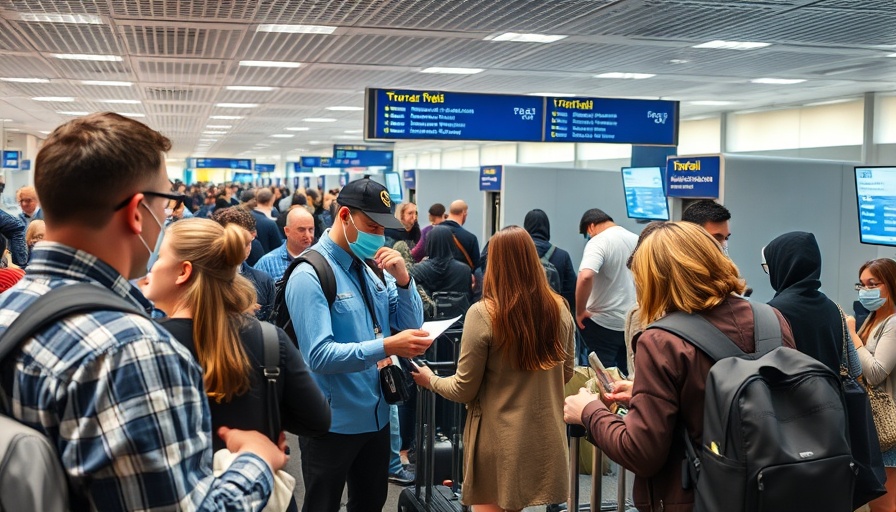
New Security Measures: Lifting the Shoe Removal Requirement
In a groundbreaking move, some US airports are beginning to lift the long-standing requirement for passengers to remove their shoes during security screenings. This decision marks a significant shift in airport security protocols that have been largely unchanged since their implementation in 2006. With notable international airports like Baltimore, Fort Lauderdale, and Portland leading the charge, the Transportation Security Administration (TSA) is embracing new strategies to enhance passenger experiences while maintaining a robust security posture.
The Background: Why Shoes Had to Come Off
The shoe removal requirement has a history rooted in tragedy. It originated after the infamous incident involving Richard Reid—the man dubbed the "shoe bomber"—who attempted to detonate explosives hidden in his footwear on a flight from Paris to Miami in December 2001. Fortunately, Reid's attempt failed, but the repercussions extended far and wide, influencing security screenings in airports that followed the September 11, 2001 terrorist attacks. The TSA mandated shoe removal as an immediate preventive measure, a protocol that has since shaped the passenger experience for more than a decade.
Current Changes and Airport Responses
The announcement from White House Press Secretary Karoline Leavitt that several airports are waiving the shoe removal requirement was described as significant. While the TSA has not formally issued a nationwide announcement about this change, the feedback is already generating excitement among frequent flyers. Cincinnati/Northern Kentucky International Airport, Philadelphia International Airport, and Piedmont Triad International Airport in North Carolina have already adopted this new approach.
Advantages of Shoe Removal Waivers for Travelers
This new policy represents more than just a convenience; it embodies a meaningful step towards a more efficient and user-friendly airport experience. For many travelers, especially working men and women aged 30 to 65 who often navigate busy schedules, the ability to keep shoes on during airport security can significantly reduce stress. Irrespective of whether one is a business traveler rushing to a meeting or a family taking a vacation, eliminating the need to remove footwear speeds up the screening process.
What Does This Mean for the Future of Airport Security?
As the TSA continues to explore innovative enhancements to the passenger experience, the potential expansion of this policy could lead to a re-evaluation of other security protocols. With preliminary reports of this measure not being enforced at major airports such as Los Angeles International Airport and New York City's LaGuardia, it raises questions about how consistency will be maintained across different locations. The focus going forward will be balancing security with efficiency, a challenge that will undoubtedly shape future protocols.
Counterarguments: Security Implications of Relaxing Rules
Despite the potential benefits of waiving the shoe removal requirement, there is an ongoing debate regarding the implications on security. Critics argue that maintaining a strong security posture is paramount. While TSA PreCheck passengers already enjoy some privileges—like not having to remove shoes—there are concerns regarding the broader impact this policy might have on overall airport security. The implementation of any new rule must carefully assess these risks.
Embracing Change: How This Affects Your Next Trip
For frequent travelers, the news of relaxed security measures is likely a welcome change. No longer will rushed passengers need to clumsily navigate their way through security lines, removing shoes only to hastily put them back on. The potential for reduced wait times further enhances the travel experience, a vital factor that every traveler appreciates. Be mindful whenever you embark on a journey just how this simplified process could make your travel smoother.
As the TSA rolls out changes across more airports, there's an opportunity for other modifications of the screening process to follow. Such enhancements not only streamline your journey but also represent a shift towards a more modernized approach to security — one that values efficiency alongside safety.
Next Steps: Stay Informed and Prepared for Travel
To maximize your travel experience, stay updated with evolving airport protocols and TSA regulations. Adapting to these changing rules will better prepare you for future travels. You can find real-time world news updates on travel policies through various international news websites to ensure you're well-informed before your trip.
This is not just about easing the travel burden; it's about rethinking security in a way that accommodates the modern traveler. As these changes unfold, passengers can take heart in knowing that their needs are being considered.
 Add Row
Add Row  Add
Add 




 Add Row
Add Row  Add
Add 

Write A Comment